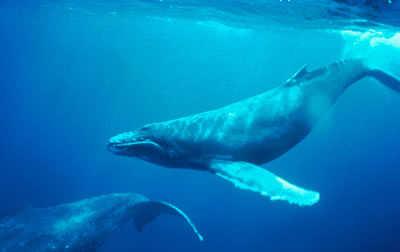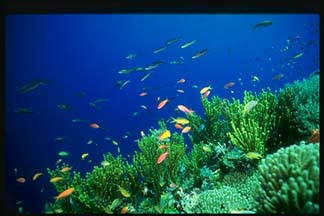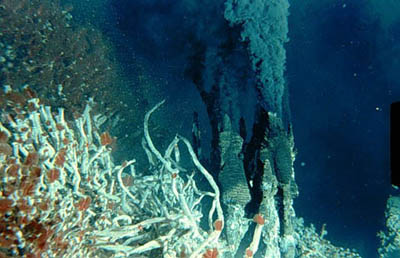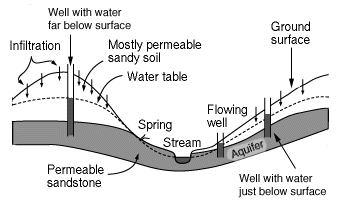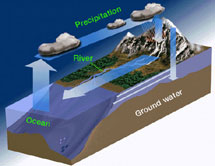Click on image for full size
Courtesy of NOAA
Life in the Open Ocean
The open ocean, called the pelagic zone, is the largest area of the marine ecosystem. It reaches from coasts to the middle of the ocean. The living things that survive in the open ocean need to have a way to float or swim in ocean water.
The area of the open ocean where sunlight shines through the water is called the photic zone. Most life in the open ocean is found in the photic zone.
Animals, protists, plants, and bacteria that float or drift in ocean water are called plankton. They are moved around the open ocean by surface currents and wind. Phytoplankton are types of plankton that do photosynthesis like diatoms and other algae. They are the beginning of food chains. Zooplankton are animals and one-celled protozoa that drift in the ocean water. Many zooplankton eat phytoplankton. Some zooplankton eat other types of zooplankton.
In the open ocean there are many types of swimmers including fish, whales, and sharks. Some fish, such as herring and tuna, swim in schools while others swim alone. Some animals have other ways of moving besides swimming. For example, squid propel themselves through the ocean with a jet of water and flying fish are able to glide just above the water surface using fins shaped like wings.
In the parts of the open ocean below where light can penetrate, there are fish and other animals like giant squid. Because there is no sunlight, there are no algae to start food chains. Instead many animals living in the deep ocean rely on the bodies of dead animals falling from the water above for food.


